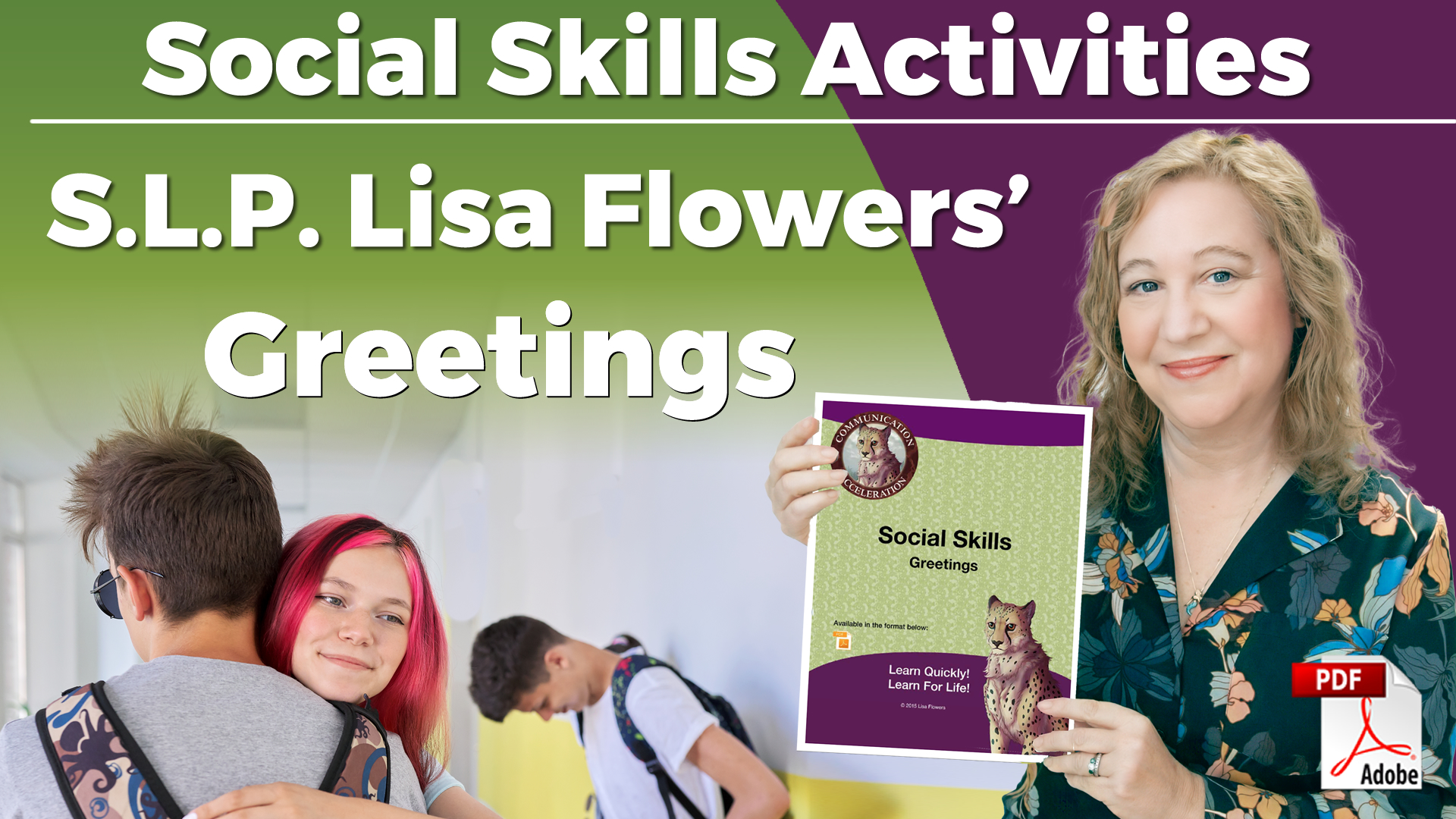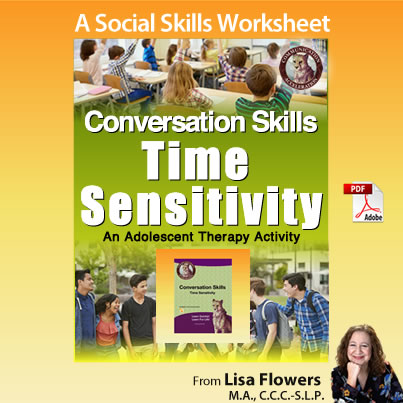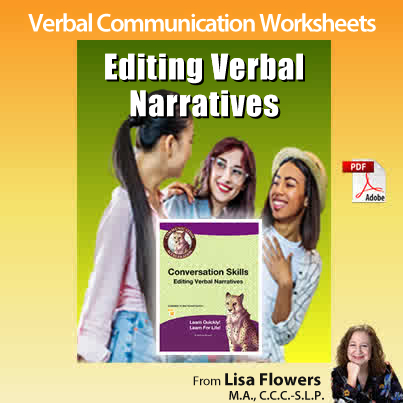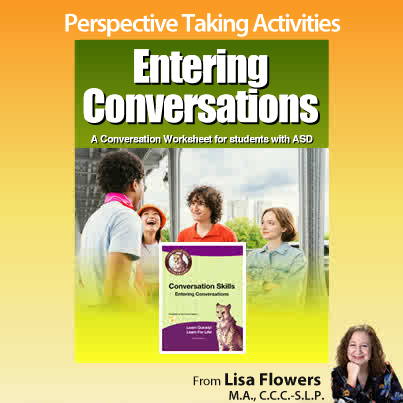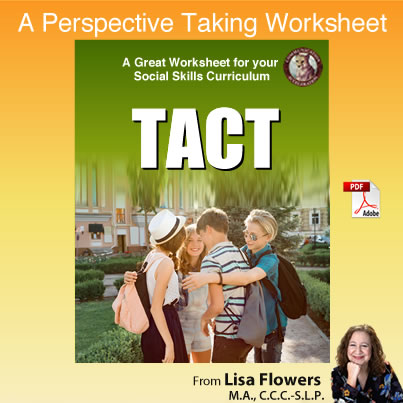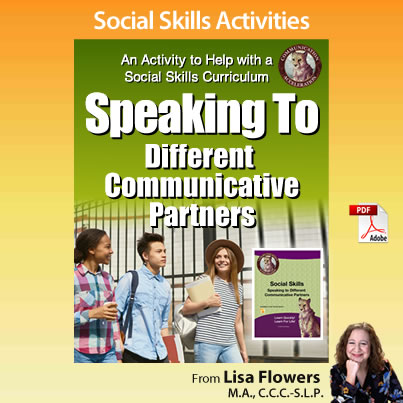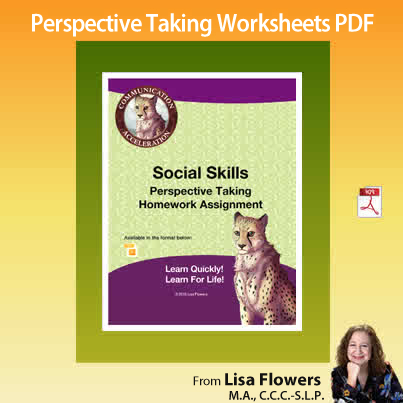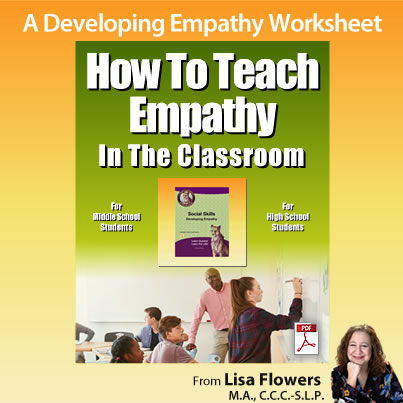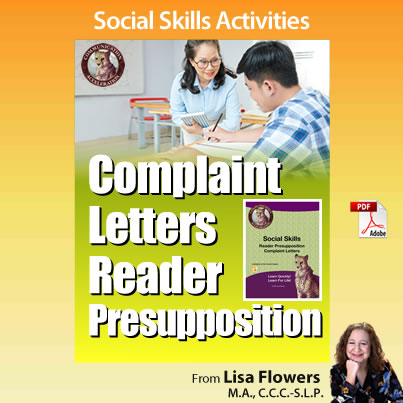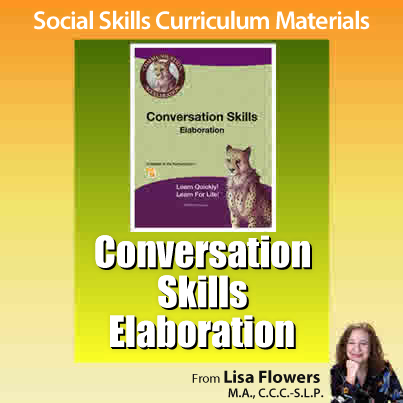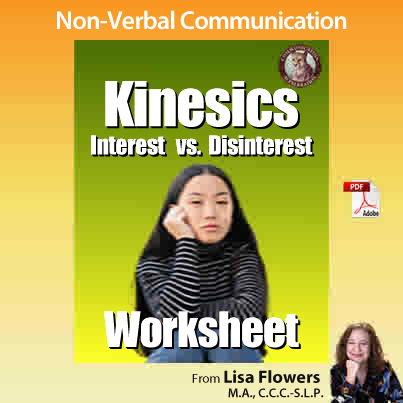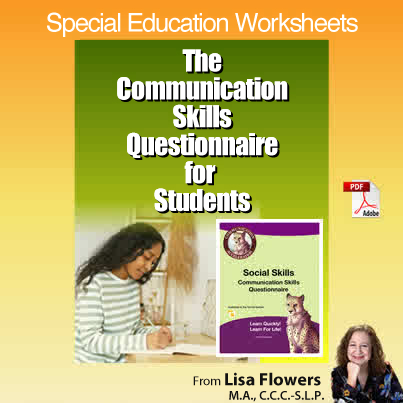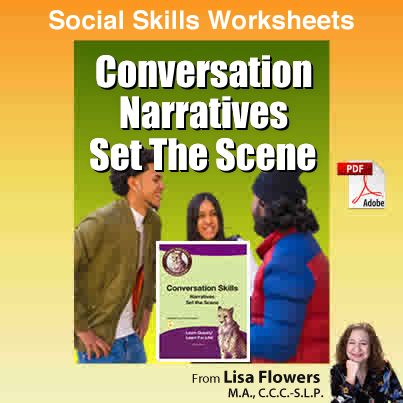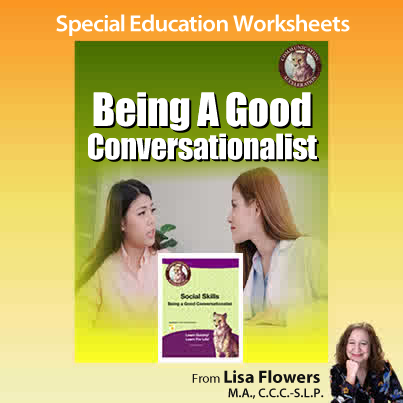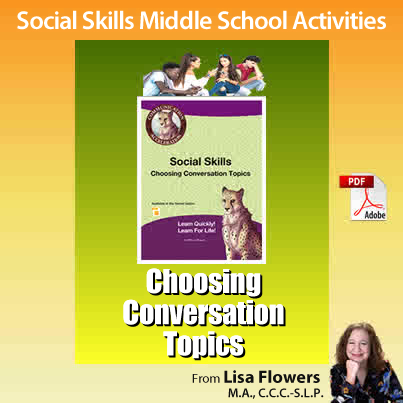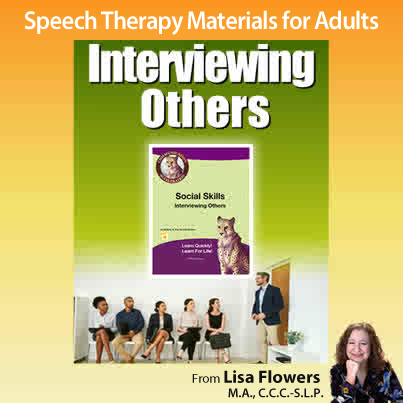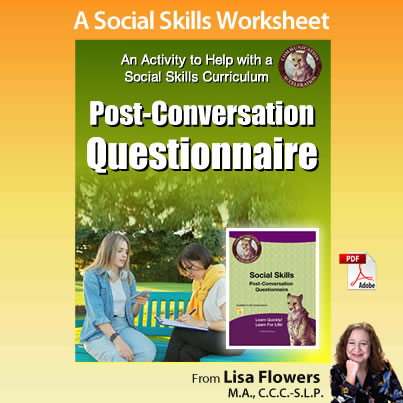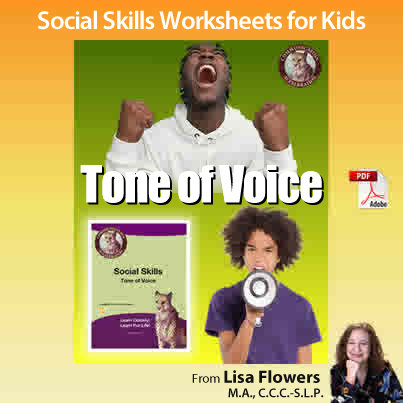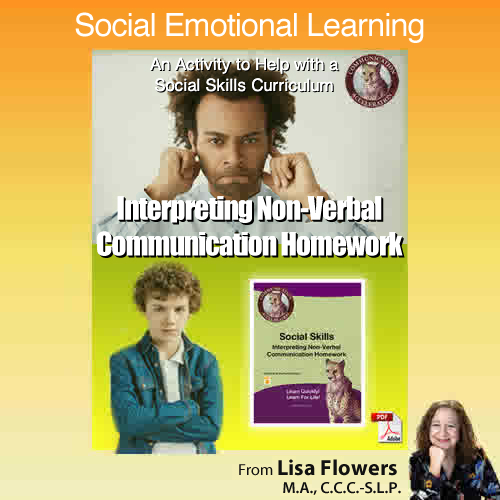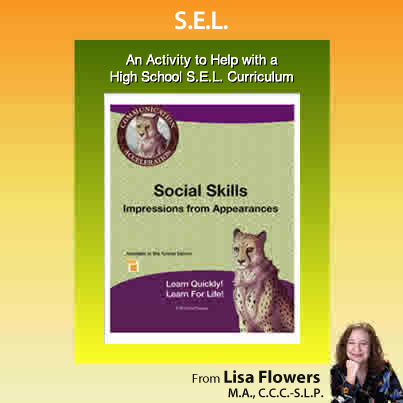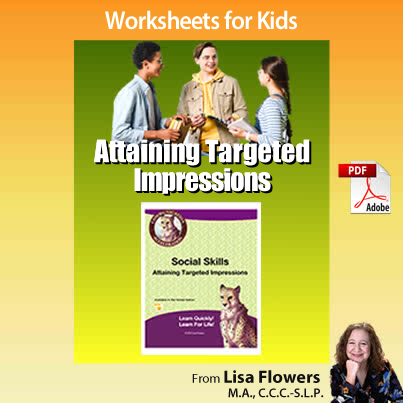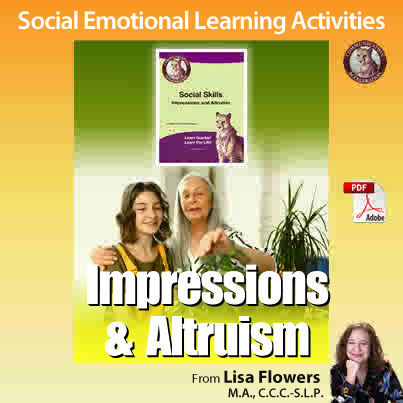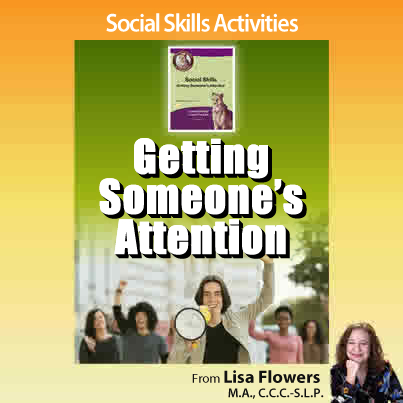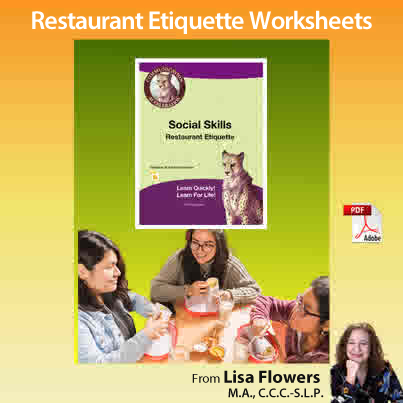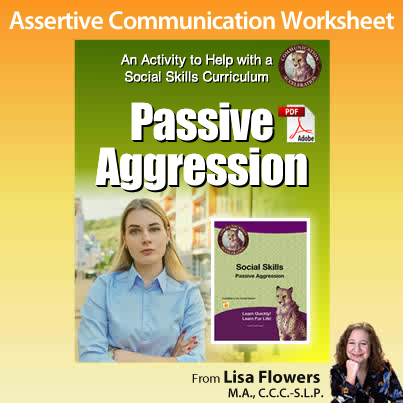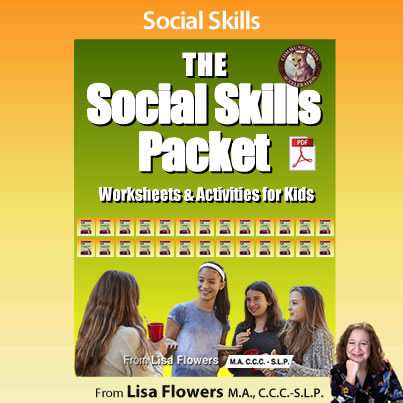Greetings, A Great S.E.L - Perspective Taking Activity in PDF
S.E.L. Activities / Greetings
Perspective Taking Activity: Greetings
Watch the video to learn more
Click here for video transcription and ADA compliant audio for the video above
Perspective Taking Activity: Greetings
This handout effectively provides students with scripting for common social greetings, including variations depending on relationships: coworkers, acquaintances, and friends.
Perspective Taking Activity: Greetings
See the audio transcription below:
Welcome to my Greetings handout. Check out this excerpt from the training video I did for the New York City Department of Education. The first activity under Real World Communication is Greetings. Now, I'm not usually a big fan of scripting, I just feel like there are too many variables, and I'd rather try to teach my students how to make decisions on what to say in different situations. But greetings are more limited, and I came up with a reference sheet to show students that you can say more than hello, right? You could say “good morning”, “how are you?”, if it's a Monday morning, “how was your weekend?”, “did you do anything fun over the weekend?” So, there are many different ways to say hello, and also goodbye, and the reference sheet makes clear how some greetings are appropriate for a friend and others are more appropriate for an acquaintance. Thanks for reviewing my description of this handout. If you like what you've seen here, please click and subscribe to my channel. I'm not exactly sure what that means, but my web guy told me it's a thing!
Get Great Social Skills Worksheets to add to your Social Emotional Learning Curriculum!
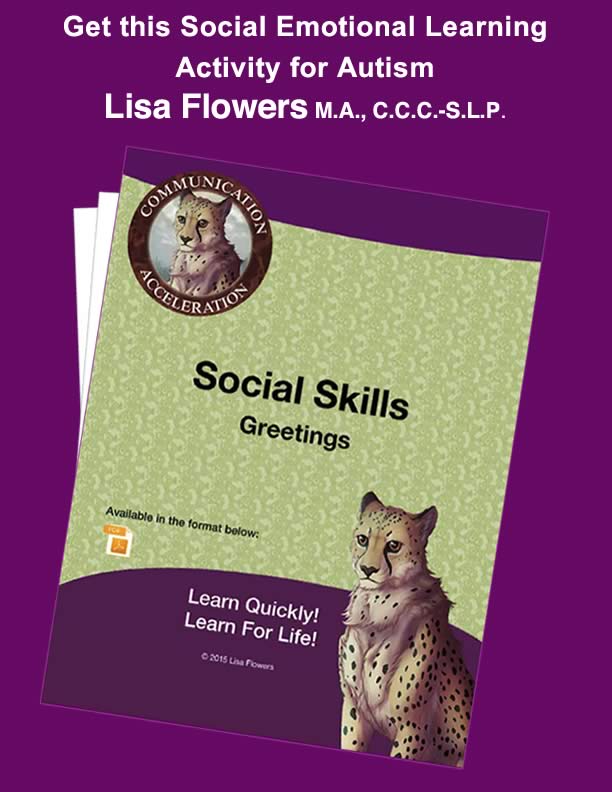
Perspective Taking Activity: Greetings
This resource operates as a reference sheet for a variety of greetings, both verbal and nonverbal in nature.
Neurotypical learners closely observe other humans from the moment they are born. Individuals with Autism Spectrum Disorder, however, typically observe others much less often. Greeting others is therefore not quite as simple as it might seem, at least for these learners. One example is two men passing each other at work, where the social custom is typically a quick nod, whereas a verbalized greeting could be seen as somewhat odd. Learners on the autism spectrum can employ this reference sheet to familiarize themselves with the wide selection of greeting options, as well as the contexts in which they are most commonly used.
Related Worksheets to this Greetings Activity
These social skills worksheets and activities for individuals with Autism and Social Pragmatic Communication Disorders target a variety of social skills, including the development of empathy, perspective taking, kinesics, listener/reader presupposition, and conversational skills.
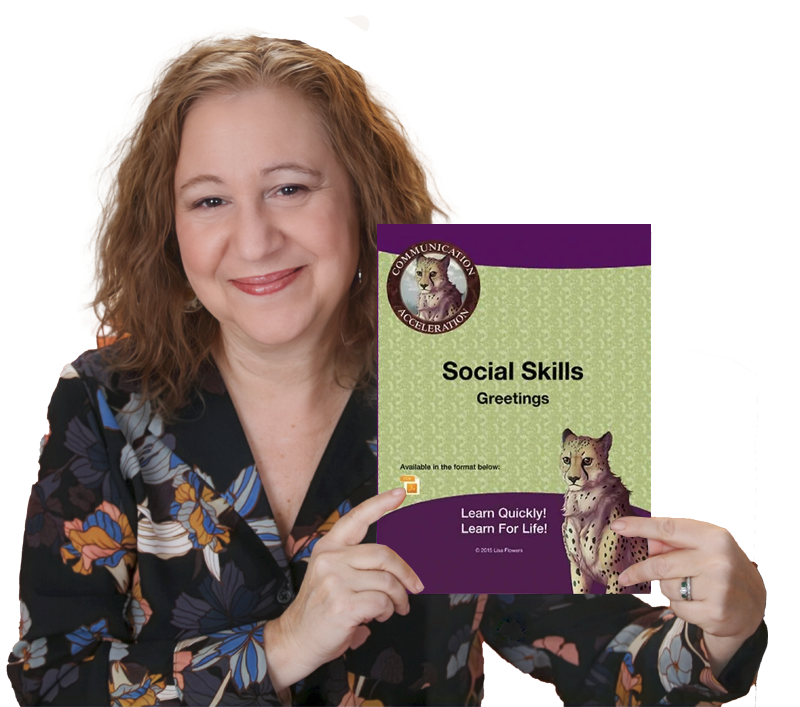

Search Another Way
Get Social Skills
Packet
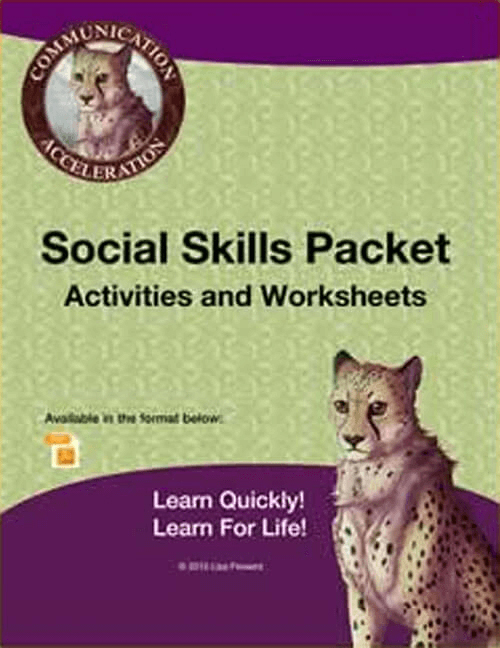
A collection of 28 social skills worksheets and activities that cover conversation skills, kinesics, perspective taking, development of empathy, and real-world communication.
Get 52 Lessons & Activities

A collection of 52 language and communication worksheets and activities that cover a plethora of reading comprehension, writing, grammar, and social communication skills.
